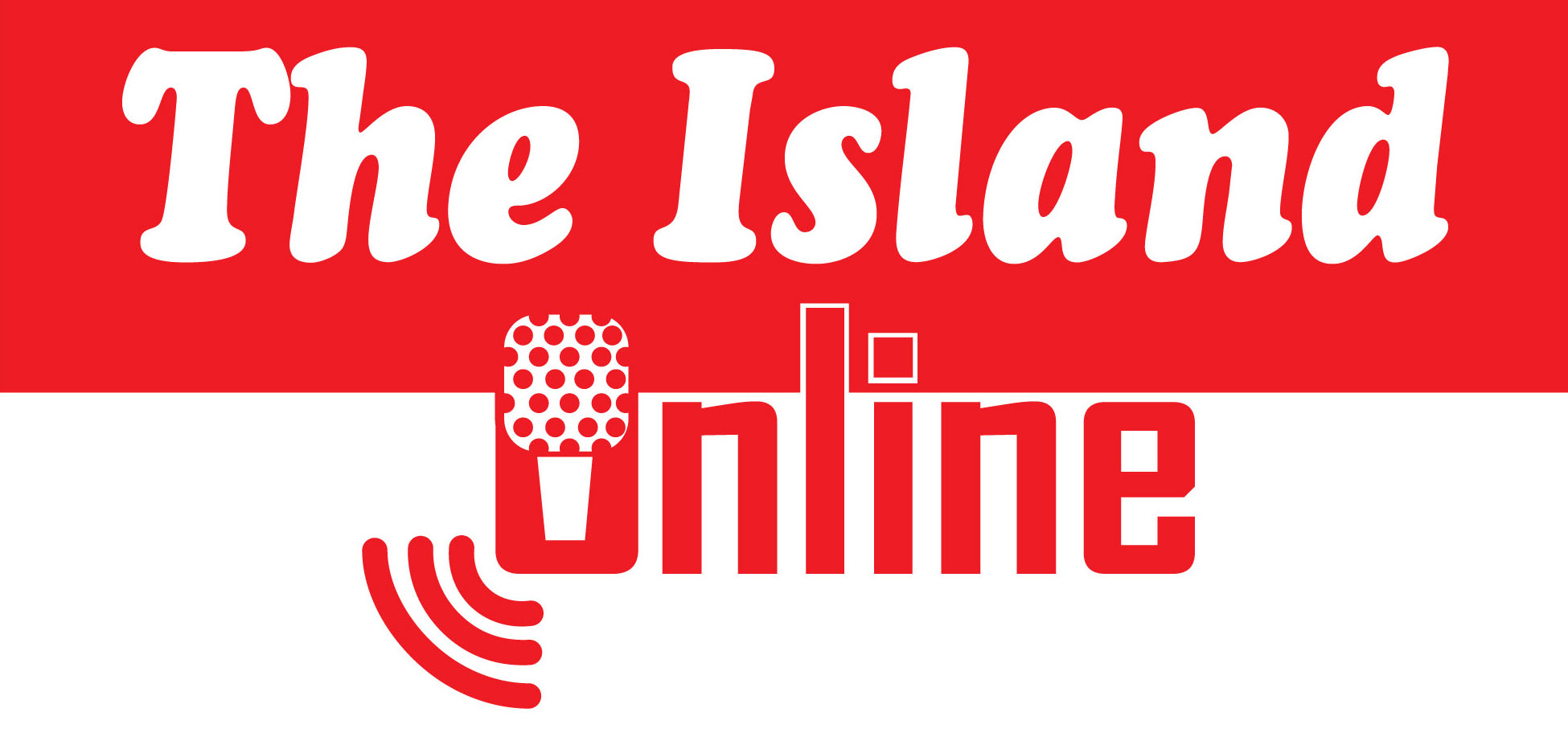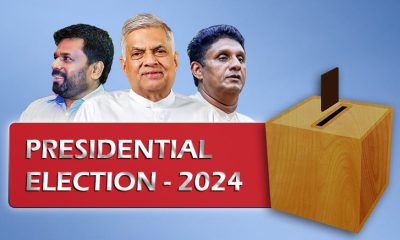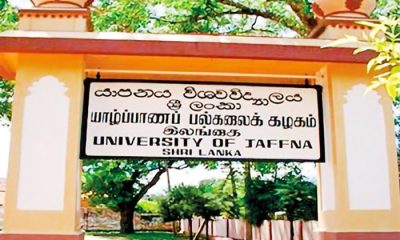Features
American Presidential Stakes and the Supreme Court

by Rajan Philips
In a split ruling last Monday, apparently for the ages, the conservative majority of the US Supreme Court gave Donald Trump a get-out-of-jail card and virtually iron clad protection from criminal prosecution. The majority ruling grants Trump and “all occupants of the Oval Office, regardless of politics, policy, or party,” absolute immunity for core constitutional acts, presumed immunity for all other official acts, and no immunity for unofficial acts. The latter immunity is arguably rendered more ostensible than real by the ruling’s rigid guidelines that forbid using facts from the sphere of official acts as evidence to prove criminality in unofficial acts. So much so, writing for the three liberal judges of the Court, Justice Sonia Sotomayor denounced the majority ruling and rejoindered: “With fear for our democracy, I dissent.”
The incumbent president has said that he needs no such immunity as he would always exercise his powers within the law. So has every other president before Trump. Still labouring to survive his debate debacle, President Biden offered his own denunciation of the ruling from the White House and resounded Justice Sotomayor’s dissent with fear for the future of American democracy. Biden accused that the majority ruling has fundamentally undermined the long standing premise of American constitutional democracy: “There are no kings in America. Each, each of us is equal before the law. No one, no one is above the law, not even the president of the United States.”
From the academic end of the spectrum of critics, Harvard University’s Laurence Tribe has opined that the ruling “restructures dramatically the American system of government” and makes way for an “imperial presidency.” For Steve Vladeck at Georgetown University, Washington DC, the ruling “tilts power away from Congress towards the president, away from judges towards the president … (and) most importantly, it tilts the power away from we the people.” Only the impeachment process is left behind as a safeguard against presidential “high crimes and misdemeanours”, and one that has proved itself to be weak and ineffective – especially “in a late second term of a presidency, just as we saw how ineffective it was late in President Trump’s first term.”
Unitary Executive
There is much more to this ruling than Donald Trump. Trump provided a convenient pretext for the ruling and has become its more than accidental beneficiary. The six conservative judges seized the opportunity given to them by Trump and used it to further extend the ‘unitary executive’ agenda of establishing a strong executive president to rein in the allegedly overgrown and over-regulatory Administrative State. In the process, the majority deliberately overlooked the appalling facts of the Trump case, dismissing them “as present exigencies” and pronouncing that “focusing on ‘transient facts’ may have profound consequences for the separation of powers and for the future of our Republic.” Be that as it may.
The unitary executive agenda is a Republican agenda that pre-dates Trump, which the current Roberts Court has been incrementally fulfilling for over a decade now. Monday’s ruling extends this agenda by conferring immunity on the office of the president in addition to empowering it. The notion of unitary executive has long been a matter for the Supreme Court in delineating the boundaries of power between the executive and legislative branches.
The term ‘unitary’ stems from the constitution’s vesting of all executive power in a single person rather than an executive council or a presidium. This is contrasted with the bicameral balancing of the legislative power between the House of Representatives and the Senate. Historically the Supreme Court has used this contrast to somewhat privilege the authority and actions of a president – on matters involving the entire executive branch – over the checks of the legislative branch.
Past disputes have mostly been about a president’s ‘removal powers’ vis a vis state officials in the executive branch and the ability of the legislative branch to check these powers. But lofty court rulings even on prosaic facts such as a president’s removal of a federal functionary have invariably created the usual universe of legal discourse on the unitary executive. Two schools of judicial thought – the maximalist and the minimalist – have emerged over time. None of this mattered much for the ordinary citizens, until now.
The unitary executive theory made its way to the White House as a companion to deregulation during the Reagan presidency and found almost full resonance during the second Bush Administration. Then Vice President Dick Cheney and Defence Secretary Rumsfeld were its prime proponents. Republican presidents would have had reasons to be annoyed with persistent Democratic majorities in the House and the Senate. Republican business supporters, on the other hand, were annoyed with the regulations of the Administrative State that hamstring industries from having a free run on the environment and natural resources.
President Bill Clinton expanded the oversight capacity of the federal Environmental Protection Agency, one of the singular creations of President Nixon in 1971, by hiring thousands of field inspectors and deploying them all across the land to protect the nation’s rich natural heritage. All the new hires of Clinton were fired by his Republican successor, Bush the younger. The process was replicated in the areas of health, housing, education and wherever the government was believed to have become the problem. The present Chief Justice John Roberts and Associate Justice Samuel Alito were exposed to embracing the unitary executive ethos during the Reagan Administration.
Judicial Pedigrees
Roberts continued under the younger Bush’s Administration along with present Associate Justice Brett Kavanaugh. Both men were part of Bush’s legal team in the Florida presidential election case in 2000, and Kavanaugh had been part of Kenneth Starr’s investigation of President Clinton in the Monica Lewinsky scandal. These career pedigrees provide insights into the workings of the Supreme Court and what judicial principles and philosophies they tend to embrace and what they choose to jettison in individual cases.
On the other hand, justices do not necessarily stay loyal to the presidents who appoint them. “That never happens” said the folksy President Harry Truman, even though presidents may think it would. Justices Sotomayor and Barret in a recent public discussion asserted that judges are not beholden to presidents or their parties who appointed them – for because of their lifetime appointment, judges far outlast their appointers who are done after four years or at most eight years.
Of the six conservative justices in the current Court, Clarence Thomas, the right wing maverick and the second African American justice after the great Thurgood Marshall, was appointed by President Bush the elder; Roberts (CJ) and Alito by Bush the younger; and the remaining three – Neil Gorsuch, Brett Kavanaugh and Amy Coney Barrett were appointed by Trump. Of the three liberal justices, Sonia Sotomayor and Eva Kegan were appointed by Obama, and the most recent addition, Justice Ketanji Brown Jackson, is a Biden appointee.
In fairness, the apex court receives about 7,000 appeal requests an year and selects fewer than 150 appeal cases for adjudication. Of the 150, only a handful of cases rise to prominence on the political radar, exiting ideological passions and heightening political controversies. The rest are decided more amicably and the rulings on them pass unnoticed except by law professionals and litigators. In the vast majority of the cases, the rulings are respected and are reflective of the manifestly serious, erudite and even brilliant legal minds at work. It is in the few politically charged cases that justices are known to split along ideological and political lines, and their rulings are scrutinized for social judgment, judicial hubris and political prejudices.
Although the six-three split in the Trump case has become well known as the Court’s ideological fault (or default) line, there have been other split combinations. Three of the six conservative justices – Chief Justice Roberts and Justices Kavanaugh and Barrett have joined the three liberal judges to constitute judicial majority in a number of key cases, including cases involving abortion medication and care as well as gun restrictions. Sometimes, Roberts and Barrett join the liberals to form a five-four majority. Justice Barett, the only female judge among the conservatives and the only judge from the South, has shown a tendency to carve her own space – sometimes joining her three female liberal colleagues and not infrequently distinguishing herself from her male conservative colleagues, especially the inflexibly conservative Clarence Thomas. If the next appointee, potentially succeeding Clarence Thomas, were to be a female justice, the Court will have more women than men for the first time in history – and a different five-four split.
The jostling, pairing and splits among the justices are also reflective of the political and cultural divisions in American society. Five of the six conservative judges are Catholics, and their collective elevation in the judiciary cannot be unrelated to the upward social mobility of American Catholics and the emergence of influential Catholic schools of thought on the political right – going by such names as “Catholic Post-Liberalism,” “Common Good Constitutionalism,” etc. Not to mention the voting shifts among American Catholics.
Traditionally, a good majority of American Catholics voted Democratic, but that stopped after the election of President Carter in 1976. Starting with the election of Ronald Reagan in 1980, a majority of Catholics have been voting Republican. Catholics became an important cohort of the so called Reagan Democrats. President Joe Biden is the second Catholic president after President Kennedy and perhaps more devout than the Boston playboy. Yet there is no Catholic embracing of Biden either by the clerics or the laity of the Church, as it was with Kennedy. Biden’s support of abortion rights and gender rights wins no favours from the church hierarchy or the court hierarchy.
Embattled Executive
The election of Trump as President implicated the Supreme Court at three levels. First, Trump had the rare opportunity to appoint three new judges in four years and that gave the conservatives a clear majority on the bench. Second, there was Trump’s MAGA (Make America Great Again) agenda without which the rolling back of some of the longstanding judicial precedents would not have been possible. Although only two of the conservative judges, Thomas and Alito who are also the oldest, are considered to be real MAGA enthusiasts, the other four justices have not been hesitant at all in joining forces to pronounce majority rulings in furtherance of their shared social conservative agenda.
The outcomes are the regressive rulings on abortion and on gun rights. The more recent ‘Chevron ruling’ belongs to the old Republican agenda that unites the traditional Republican and the new MAGA forces in achieving common ends. The new ruling handed down on June 28 overturns a 40-year old judicial precedent that has provided the framework for regulatory decision making in the federal government. The 1984 case was between Chevron Corporation, specializing in oil and gas industries, and the Natural Resources Defence Council, an environmental advocacy group, and was about a change in the interpretation of the word “source”, by the federal Environmental Protection Agency (EPA), for assessing and addressing air pollution.
At issue was the EPA’s authority to make the interpretive change in the absence specific provisions in the law. In a unanimous landmark ruling, the Court rejected the appeal, confirmed the EPA’s authority to fill gaps in the law, and established what has come to be known as the “Chevron deference,” requiring judges and courts to defer to the expertise of officials at federal regulatory agencies. The overturning of the Chevron ruling will undermine the ability of government agencies to regulate everything from clean water and air quality to health care. In addition to empowering the executive president to rein in the Administrative State, the Roberts Court has arrogated to itself the power to review and reject expert opinions.
The third implication of the Trump presidency for the Court is what might be called the embattlement of the executive; specifically, the Trump presidency. There is a load of truth in Trump’s often repeated protestation that no other American president has been targeted by the impeachment and judicial processes the way he has been, both in and out of office. What is even truer is that no other American president has conducted himself as Trump did, flouting every rule and convention and abusing the power of office to personal ends. The political reality is also that the sense of embattlement is widely shared by those on the political right and including judges on the Supreme Court.
To wit, Trump’s growing popular support after every indictment and conviction. To wit as well, the assumption of judicial responsibility in the majority ruling – to rescue the unitary executive from future harassment by the zealous prosecutors and the lower courts. This the majority did by deliberately ignoring the stark facts of the case against Trump for his insurrectionary attempt to overthrow the results of the 2020 presidential election. The ruling dismissed the nationally witnessed and well documented attempts of Trump as “present exigencies” and “transient facts,” and proceeded to provide a solution to a problem that only Trump had created, and which the Court could and should have ended with Trump.
In opting to protect all future presidents, the Court has not contributed to resolving any of the current exigencies and transient facts. It has only aggravated them and turned the transient into something more permanent. No one knows what Special Counsel Jack Smith is planning to do to restart his case against Trump after he has been quite severely handicapped by the Supreme Court. It is the same with all the other prosecutors and lower courts battling Trump.
The uncertainties over Trump’s cases are new additions to the already confused state of the American judicial system because of the Supreme Court’s overturning of longstanding precedents on abortion, gun restrictions, voting rights, affirmative action, and now in administrative law. The great resolution either way is being left to the people in the November presidential election. But the people are also handicapped in a presidential election in America because they cannot directly determine the outcome, but must filter it through the Electoral College system.
Features
Are rice consumers and farmers victims of current practices?
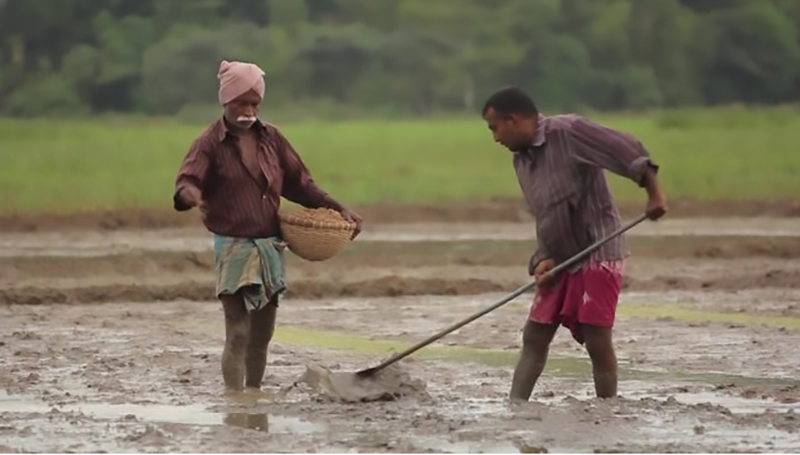
by Neville Ladduwahetty
One of the subjects President Anura Kumara Dissanayake is responsible for is agriculture. On the other hand, subjects such as food security and health that are related and dependent on agriculture come under the purview of Prime Minister Harini Amarasuriya. Consequently, the production and distribution of agricultural products have a bearing on access to food at affordable prices to ensure not only food security but also on poverty and malnutrition. Thus, responsibility for the welfare and wellbeing of the majority of Sri Lankans depend on the joint efforts of the President and the Prime Minister.
An area that will have a significant bearing on the above is the production and distribution of rice. This topic is addressed in a well-researched article titled “RICE MONOPOLY Continues to Put Farmers and Consumers in Peril” by Prageeth Sampath Karunathilaka (Daily Mirror, Sept 25. 2024). This article confirms that consumers and farmers are victimised not only due to shortages in production but also by the current practices that are permitted to operate with regard to the production and distribution of rice.
RICE PRODUCTION
The aforesaid article says the per capita rice consumption is approximately 125 kg per year. Furthermore, it states that during a conversation the author had with a former Director of Agriculture, K.B. Gunaratne, he had commented that despite the fact that there were variations during COVID, Sri Lanka must produce an additional 2.4 million metric tons annually”.
The argument that Sri Lanka is self-sufficient in rice does not hold water. Therefore, since the current shortfalls have a bearing on market prices which in turn have a bearing on health, poverty and malnutrition, price variations should be avoided. It is therefore imperative that rice production be increased and stocks monitored regularly to ensure that sufficient stocks are available at any time because shortfalls are often the cause to justify increasing market prices.
Increasing paddy production could be achieved either by advanced technologies or by bringing more land under cultivation. Since the latter approach would involve an increase in infrastructure and maintenance costs, it would be more prudent to resort to advanced technologies because human capital and related infrastructure are already available. Furthermore, the former approach is likely to bear not only faster results but also more income to the farmer through increased yields.
CURRENT PRACTICES
The article cited above states: “In the past large-scale paddy mill owners sold rice at Rs. 220 per kilogram, based on the government’s guaranteed price. Meanwhile, smaller mill owners sold the same rice for Rs. 160-175 per kilogram. This allowed large scale mill owners to make a profit of Rs. 60-75 per kilogram of rice. They earned significant profits from paddy purchased at low prices. Although the government set a guaranteed price of Rs. 100 per kilogram of paddy, some large-scale mill owners bought it for as low as Rs. 70-80. It is no secret that purchasing hundreds of thousands of kilos of paddy at low prices and storing it led to massive profits ….
According to the National Institute of Post-Harvest Management, a large-scale mill owner earns at least 4 million in profit per day, which amounts to Rs. 120 million per month … To produce one kilogram of Nadu rice, about 1.5 kilograms of paddy are required”. This is so with other varieties as well. Thus, on average, nearly 2/3 of rice is produced from 1 kilogram of paddy.
“The cost of producing one kilogram of rice, including expenses such as machinery, electricity, labour and distribution is approximately 25 rupees. Given the government’s guaranteed price of 100 rupees per kilogram of paddy, rice can be sold to consumers at 160-175 rupees per kilogram. However, in the current market, a kilogram of rice is sold at 220 rupees”.
With due respect, there appears to be an inaccuracy in the conclusion that “rice can be sold to consumers at 160-175 rupees per kilo”. If as stated in the article cited above, 1.5 kilos of paddy are required to produce 1 kilo of rice and the guaranteed price is Rs. 100 for a kilo of paddy, it means a farmer would need Rs. 150 to produce 1 kilo of rice. To this, if Rs. 25 is added as the cost of production as stated in the article, the bare cost without profit would be Rs. 175. Therefore, the comment that “rice can be sold to the consumer at 160-175 rupees per kilogram” needs to be revisited.
STRATEGY for the IMMEDIATE
What is evident from the foregoing is that the higher the guaranteed price for paddy, the greater is the benefit to the farmer because of increased income. On the other hand, high guaranteed prices for paddy results in high prices for the consumer. What is demonstrated above is that with a guaranteed price of Rs. 100 for paddy, the price to the consumer has to be close to Rs. 200 and above. Another fact demonstrated is that a high guaranteed price to the Farmer and an affordable price to the consumer is an incompatible proposition. Consequently, the challenge is how the farmer could earn a worthwhile income while ensuring that the consumer has access to rice at an affordable price.
A fact that influences this challenge is the availability of paddy surpluses soon after each harvest. The large-scale millers have financial capacities and infrastructural resources to buy large stocks following each harvest at low prices and store the paddy. Consequently, farmers are at their mercy. Such advantages are not available to small and medium scale Mill owners. However, the Agriculture Department reports that it is “set to provide a maximum loan amount of Rs. 50 million rupees for small and medium scale rice mill owners and maximum loan amount of Rs. 25 million rupees for paddy storers and collectors through state and private banks…” (Dept. of Agriculture Report).
An alternative proposed by All Ceylon Farmers’ Federation (ACFF) Convener Namal Karunaratne speaking to The Sunday Morning (June 25, 2023) is “that prices could be reduced if production cost was reduced… For instance, to reduce production costs, farmers’ equipment and gear need to be freed from taxes. Fertiliser prices need to be reduced. If production costs are reduced to about Rs. 60 a kilo of paddy can be sold for Rs. 80-90. The responsibility for this is in the hands of the government.”
Similar concepts have been in operation since 2000 by The Farm Storage Facility Loan Program (FSFL) of the US Department of Agriculture. FSFL provides low-interest financing so producers can build or upgrade permanent and portable storage facilities and equipment. Eligible commodities include grains, oilseeds, peanuts, pulse crops, hay, hemp, honey, renewable biomass commodities, fruits and vegetables, floriculture, hops, maple sap, maple syrup, milk, cheese, yogurt, butter, eggs, meat/poultry (unprocessed), rye and aquaculture. Eligible facility types include grain bins, hay barns, bulk tanks, and facilities for cold storage.
Drying and handling and storage equipment is also eligible, including storage and handling trucks. Eligible facilities and equipment may be new or used, permanently affixed or portable. Since its inception in May 2000, more than 33,000 loans have been issued for on-farm storage, increasing storage capacity by 900 million bushels.
FSFL is an excellent financing programme for on-farm storage and handling for small and mid-sized farms, and for new farmers. Loan terms vary from 3 to 12 years. The maximum loan amount for storage facilities is $500,000. The maximum loan amount for storage and handling trucks is $100,000. In 2016 FSA introduced a new loan category, the microloan, for loans with an aggregate balance up to $50,000. Microloans offer a 5 percent down-payment requirement, compared to a 15 percent down-payment for a regular FSFL, and waive the regular three-year production history requirement.
CONCLUSION
The clear objective of any government has been to ensure a healthy income to the paddy farmer and rice at an affordable price to the Consumer. Achieving such an objective means improving the welfare and wellbeing of nearly a third of the population who are engaged in production and improving the health of the whole nation with an impact on poverty.
A variety of opinions and proposals have been expressed and explored over the years to realize the objective stated above. Most of them involve the intervention of the Government in one way or another. For instance, one way is for the Government to control 10% of paddy production to stabilize production and to provide financial benefits in one form or another to reduce costs.
One form of financial assistance considered has been to provide loans to establish small and medium scale Mills and storage facilities throughout the country; a strategy adopted by the US Department of Agriculture. Another form has been to subsidize fertilizer and other inputs required in the production of paddy. Yet another is to establish guaranteed prices for paddy; a strategy that favours the Farmer but not the Consumer, as stated above.
None of these options have proved satisfactory, as far as achieving the desired objectives are concerned. The reason perhaps is because strategies proposed are from the perspectives of the Farmer or the Consumer and not from a holistic perspective of both. Therefore, the strong recommendation is that a Forensic Audit is conducted to ascertain the most effective strategy or strategies to meet the interests of both Farmer and Consumer.
However, what is needed in the immediate term is for the Government to engage with the large-scale mill owners and the representatives of the All Ceylon Farmers’ Federation to establish a sustainable compromise arrangement that serves the interests of both the Farmer and Consumer because at the end of the day, their interests affect the wellbeing, health and food security of the whole nation, the responsibility for which rests jointly with the President and the Prime Minister.
Features
Hope for future; Heads need be cautious

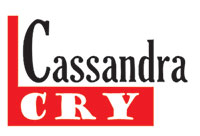 Many good things have been happening; the best is that in all Sri Lankans, barring opposing political parties and politicians, hope has been rekindled after decades of gloom and doom. We trust, admire and have full confidence in the President and the Prime Minister. Cass does not need to spell these out and give reasons.
Many good things have been happening; the best is that in all Sri Lankans, barring opposing political parties and politicians, hope has been rekindled after decades of gloom and doom. We trust, admire and have full confidence in the President and the Prime Minister. Cass does not need to spell these out and give reasons.
Beware the bullet
Open letters have been penned and seen in the public sphere as how things should be done. Personally, Cass believes no pontificating nor even advice is needed. President Anura Kumara Dissanayake and his advisors, and Dr Harini Amarasuriya know what they have to do, how best to do these, and they will deliver, for the greater benefit of the country and its people. Already things are greatly improved like food items getting cheaper.
Cass always wondered why eggs and onions were imported from India, Bangladesh and Pakistan when we can produce our own, and if there occurred a shortfall, we just had to tide over that hiccup and use less or no eggs and onion. Then she was told of the import mafias – unscrupulous persons making personal profits at the expense of the country and us The People. The authorities, under the new dispensation which is honest and wise and true to the country will stop import of inessentials. That will give a boost to local producers. So, enjoy it!!
One matter Cass wanted to write an open letter to the two Heads was to please be careful; employ high security; cut down on moving around freely. They have to be very cautious. The entire country’s future now depends on these two: the Prez and PM. This is no exaggeration. Murderers, willing now to kill for perhaps a mere Rs 2,000, float around looking for their kind of work. Someone corrected Cass when she said this. Stupid, a murderer can be hired for a shot of arrack, so low is the morale of some and so rampant are sharpshooters ready to be hired.
The two Big Ones must constantly keep in mind that there are politicians in kapati suits who do not have an ounce, nay, an atom of conscience. The hunger for power, envy, need to avenge being defeated are so great that for the sake of just himself, he will order the murder of someone, even though it will shatter the entire country and send it plunging down a gorge worse than the bankruptcy they caused. Also, a strong motive pushes them forward to order a killing – their being open to exposure now that previous crimes are to be re-investigated, and more closely.
Remember Lasantha W was brutally, horrendously murdered just because he was writing about an act of suspected corruption. Even more tragic was the torture and murder of ruggerite Wassim Thajudeen since he cocked a snook at powerful sons and was, it is said, due to a dispute about a sports team. Those who were suspected of commissioning the murders and the murderers themselves are still free and around. Nothing was proven in these cases so what Cass says here is almost hearsay, but fingers pointed then and still do so. Murder simply cannot be overlooked.
Advice given by elders when we complained of a theft of something of ours was: Why do you accommodate temptation? Why are you not careful about your possessions? Do not keep them lying around, inviting theft. Now that Cass is the older person and allowed to advise: please, increase the security around our Head of State and Head of Government. It was wonderful seeing the President Elect let himself out of his car and walk unescorted by security personnel to take his oaths as Head of State. He needs to change his stance; and Harini as well. They need very secure, foolproof protection. They must also cut out walk-abouts.
Work ethic
Iridescent, luminous is the message conveyed by the true story of the son who reported for work in the skies while his father was taking oaths as the Prez of the Democratic Socialist Republic of Sri Lanka. His reply to his peers who asked him why he was not among the VVIPs at this momentous event is said to have been: “I let my father do his job and I like to do my job.”
That ethos was much with us older persons when we were in careers: hardly took leave, especially medical staff and teachers, (not government teachers who were often non-caring of kids in their charge); we worked a full day. Cass remembers going to her place of work the day after her husband was cremated. Shocked looks. You could have taken a week off. But why? I did all I had to do and now I am ready to carry on my job. She remembers as the Education Officer in a professional association finding students taking very long over an assignment they had to submit before final results. Why have you taken so long to complete the research and submit your paper? My father died? When? A year ago. So, you are in deep mourning all this time, unable to do what you have to do! That is the general trend in this lotus eating country of ours.
Back to work
This malaise has ceased. Goodness gracious! A woman reports that she visited the income tax office in the past week. A department which had earned the wrath of the public for sending them from pillar to post. But to her utter surprise and delight her work was attended to, pronto, and she was treated politely.
Cass had a report to get about a piece of land. Her agent went a number of times to two offices concerned and spent many hours, but the document was not signed. The person authorised to sign the document had gone to political meetings, he said. The agent told her the officer expected jarava – oiling palms. Post September 23, Cass told her agent that now he would get the completed document handed over to him the moment he went in!
Demise of the vehicle parades
A vendor on Thurstan Road opposite Royal and Thurstan Colleges told a friend that normally a large number of armed forces’ vehicles driven by uniformed personnel would stop in front of where he was to drop boys studying at Royal. But no longer since September 23!
Monday late news reported that 107 vehicles, all luxury, were allocated to Presidential advisors, secretaries et al by ex Prez Ranil W. So very many advisors when he was a man who decided matters often on his own? What did Rosy Senanayake advise him on, pray? Sartorial elegance? This is just one institution and the cost borne by us, citizens, in maintaining them a favoured bod could cruise all over in a public paid for vehicle? Deeply shocking!
Dr Harini Amerasuriya’s views
Cass listened to an interview conducted before the presidential elections by Kishani Alanki of Conversations with Dr Harini Amarasuriya where she was asked what she stood for if the NPP won the presidency. Cass’ heart got lighter, hopes kept rising and pride was born within as Dr H A outlined strategies she would promote. She first made clear the ideology of the NPP and its inception – the National People’s Power or Jathika Jana Balawegaya, established in 2019, is a socialist political alliance led by the Janatha Vimukthi Peramuna, consisting of 21 political parties.
Dr H A’s main areas of interest are education, women’s and children’s concerns and of course bringing equality among all in the island, particularly concentrating on erasing the divide between the haves and the marginalized. She was questioned about the low representation of women in Parliament and how she fared, with the majority of her co-MPs being male. She smiled broadly! She said she fared well but there were instances when behaviour toward other women MPs was below par (Cass’ words).
Encouraging it was to hear that in her interaction with women in various spheres of employment and economic status, she found so many willing to give of their ability to improve the condition of the people of the land. Yes, Cass agrees wholesale with the move: give a woman a job and she will do it well, with full commitment and effort. Corruption and its temptation are so much less in women, Cass boldly affirms.
So, unlike on previous Fridays, with Cass’ dismal mood infusing her Cry with acid and suppressed frustration, she now looks to the future with hope and enthusiasm.
Features
Pathfinder Foundations launches Sinhala Translation of ‘The India Way: Strategies for an Uncertain World”

The Sinhala translation of ‘The India Way: Strategies for an Uncertain World’ by Dr. S. Jaishankar, Minister of External Affairs of the Government of India, will be launched in Colombo today. The decade from the 2008 Global Financial Crisis to the 2020 Coronavirus pandemic has significantly transformed the world order. In The India Way’, Dr. S. Jaishankar analyses these challenges and proposes possible policy responses. He places this thinking in the context of history and tradition, appropriate for a civilizational power that seeks to reclaim its place on the world stage.
The Sinhala translation of the book ‘The India Way’ is a publication by the Pathfinder Foundation translated by Ajith Perakum Jayasinghe.
The original publication was undertaken by Delhi-based Harper Collins Publishers India Private Limited, from whom Pathfinder Foundation obtained the license to translate the work into Sinhalese language and print for distribution free of charge.
The book is available free of charge for public libraries and libraries of all universities in the country by contacting pm@Pathfinderfoundation.org or 011 425 9952-3.
-

 Features7 days ago
Features7 days agoWAKE UP SRI LANKA ……Presidential Elections 2024
-

 Features7 days ago
Features7 days agoPresident Anura Kumara Dissanayake’s Historic Win and his Promising Start
-

 News6 days ago
News6 days agoAKD’s party has already snatched 2/3rd of 160 electorates -Zuhair
-

 News5 days ago
News5 days agoPMD reveals sheer number of vehicles used by RW’s aides
-

 News5 days ago
News5 days agoEC shoots down AKD’s enhanced subsidies in view of 14 Nov. polls
-

 Opinion5 days ago
Opinion5 days agoGolden Memories in a Golden Jubilee celebration
-

 Editorial7 days ago
Editorial7 days agoA breath of fresh air
-

 Features5 days ago
Features5 days ago‘Ballard of the Warriors’

